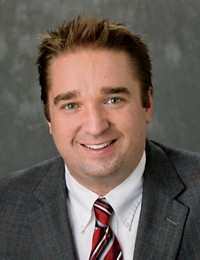Advertisement
Grab your lab coat. Let's get started
Welcome!
Welcome!
Create an account below to get 6 C&EN articles per month, receive newsletters and more - all free.
It seems this is your first time logging in online. Please enter the following information to continue.
As an ACS member you automatically get access to this site. All we need is few more details to create your reading experience.
Not you? Sign in with a different account.
Not you? Sign in with a different account.
ERROR 1
ERROR 1
ERROR 2
ERROR 2
ERROR 2
ERROR 2
ERROR 2
Password and Confirm password must match.
If you have an ACS member number, please enter it here so we can link this account to your membership. (optional)
ERROR 2
ACS values your privacy. By submitting your information, you are gaining access to C&EN and subscribing to our weekly newsletter. We use the information you provide to make your reading experience better, and we will never sell your data to third party members.
Environment
Perspectives: Hands-on training of scientists and engineers matters more than ever
Two education advocates say research-experience programs are critical for driving innovation and economic competitiveness
by Donald L. Johnson and Arthur J. Stewart
November 6, 2017
| A version of this story appeared in
Volume 95, Issue 44
The number of workers with science and engineering knowledge and skills is a crucial gauge of a nation’s innovative capacity and economic competitiveness, according to the U.S. National Science Board’s report “Science & Engineering Indicators 2016.” Oak Ridge Associated Universities (ORAU), where we work, is a consortium of research universities that, among other things, helps manage a variety of U.S. internship and research-experience training programs designed to enhance the knowledge and skills of students and recent graduates. These efforts are helping ensure the future availability of science and engineering workers needed for solving difficult national challenges in energy, science, nuclear security, and health.

For example, the Department of Energy’s Oak Ridge Institute for Science & Education (ORISE) provides workforce development and scientific discovery opportunities for nearly 8,000 students, faculty, recent graduates, and postdoctoral researchers each year. The participants in these programs, many of them interns, work alongside staff scientists, engineers, and other mentors to conduct hands-on research and explore scientific and technical developments through federally funded programs at national laboratories, research centers, and universities. The environment at these world-class host facilities fosters rich interactions among participants and the investigators they work with for exploring leading-edge ideas and approaches. The participants can engage in the cross-disciplinary teamwork necessary to analyze today’s complex problems and witness, firsthand, the career paths available outside an academic setting.
Chemistry is a discipline that strikes at the heart of many of these research-experience programs. A “chemistry” keyword search typically returns more than 300 hits within Zintellect, a web-based system developed by ORAU to connect prospective interns with research opportunities and project mentors. Some of these programs are not widely known, but they are important because they offer research experience through a surprisingly broad range of sponsor organizations. These opportunities, some available to U.S. citizens only and others also available to foreign nationals, include 3-D printing at the Food & Drug Administration, chemical synthesis at the Centers for Disease Control & Prevention, nanomaterials research at the Air Force Research Laboratory, water analysis research at the Environmental Protection Agency, and nuclear fuels development at Oak Ridge National Laboratory.
When program participants are asked about their research proficiencies before and after their appointments, they consistently report improvements. At Oak Ridge National Lab, for example, improved proficiencies include selecting and designing methods for research investigations, forming connections between research findings and existing knowledge, adapting to new information, presenting findings, and posing research questions. Such expansion of authentic science capabilities in budding researchers occurs at multiple federal facilities and across multiple appointment durations, which range from a few weeks to several years.
Internship experiences further provide participants with information about job opportunities in fast-growing or high-demand specialties. Evidence from several studies on our programs’ impacts indicates that they can affect intern decisions about attending graduate school, participating in subsequent research activities, and choosing an area of specialization—in other words, making career choices. For undergraduates, the largest impact of an internship is to influence their areas of specialization. For graduate students, the largest impact is on their research interests.
Our interviews with former interns are enlightening. One graduate intern at a national laboratory told us how she was introduced to the worlds of geographic information systems and computational modeling and became involved with quality control, curating data from multiple sources, and finding patterns in data. She pointed out that our nation is now in an age of big data and analytics. National laboratories are at the forefront of this revolution, with access to reams of data, supercomputers, and great minds that can transform those data into insight. She now uses data analysis and visualization skills, honed during her internship, in her current job researching how changes in average streamflow, floods, and droughts occur in response to climate and human factors.
Another summer intern, on starting his assignment, had no idea where a research opportunity would lead him. After years of staying home to help raise his seven children, he enrolled in a local university and spent two summers in internships at a national laboratory. Now, several years later, he finds himself working as a staff member on an award-winning team at the same national lab where he interned. When we spoke with him, he recognized how the internships had shaped his personal and professional development and was encouraging others to apply. “The main benefits of being in the program were making contacts and discovering opportunities,” he related. “I would not have a job at a national laboratory today if it weren’t for interning, getting to know the people here, and being able to demonstrate my abilities.” His current job as a data analytics software engineer involves the area of machine learning known as deep learning in an effort to accelerate cancer research.
A third participant described an experience at an agricultural research center where he helped develop a near-infrared spectroscopy application for the cotton fiber and textile industries. His research moved portable near-infrared instruments for analyzing cotton fiber out of the lab and into the field, leading to seven publications during his research appointment. He told us how he spent entire days collecting and analyzing data, finding it to be a “life-changing experience,” especially the collaboration with well-known industry leaders across the country.
Colleges and universities have long played the primary role in providing students with the human capital necessary to meet both industry and government needs, and higher education has enjoyed substantial federal and state support to address those needs. But just like science has changed over time, industry and government needs have changed, too.
For example, the U.S. National Academies Board on Higher Education & Workforce’s Committee on Revitalizing Graduate STEM Education for the 21st Century is a response to the idea that the current science, technology, engineering, and mathematics (STEM) education system, by itself, is not preparing graduate students for productive careers in today’s world. Of concern, the committee points out, is that graduate students are not getting the training they need to best align them with the needs of the scientific enterprise, potential employers, and broader society. That concern is reflected in data from the U.S. Census Bureau’s most recent American Community Survey, which shows that many people with STEM education are not employed in conventional STEM occupations. As the National Academies committee notes, “The Ph.D. graduate education system has changed relatively little over the past 100 years, with its fundamental format directed at preparing students primarily for research careers in academia. At the master’s level, there have been more significant changes over the last decade or two, but there is concern those changes may have been too few or too small in scale.”
Through partnerships with colleges and universities, research-experience programs like those we mention are preparing students for careers outside academia by helping them gain additional experience and exposing them to new interdisciplinary skills. Perhaps more important, these programs help keep former participants engaged in careers and research interests tied to their education and research experience. This success, in turn, provides the host research facilities with a supply of workers with the desired suite of science and engineering knowledge and skills. This talent pool also provides U.S.-based industries with skilled workers for their expansion and can enhance the economic competitiveness of both the participants and the nation.
Now, more than ever before, the world is faced with a forest of scientifically rich problems, including energy demand, natural resource supply, industrial impacts on human health and the environment, poverty, and sustainability—all interconnected problems. More broadly trained individuals with STEM-discipline expertise are needed, and one way of ensuring that is through unwavering support of internship and research-participation programs.
Donald Johnson is an economist with Oak Ridge Associated Universities and has been studying the energy sector and the labor market for energy-related scientists and engineers for more than 30 years. As a former research participant at a national laboratory, he has firsthand knowledge concerning the life-changing experiences from participating in these programs.
Arthur Stewart is a science education program manager at Oak Ridge Associated Universities with more than 25 years of research experience in aquatic ecology and ecotoxicology. He also explores science creatively by writing and publishing science-flavored poetry.
The views expressed by the authors do not necessarily state or reflect those of the U.S. government and its agencies or ORAU’s sponsoring institutions.
Add your thoughts
Share your research experiences as an intern, co-op student, grad student, or postdoc in the comment box below.






Join the conversation
Contact the reporter
Submit a Letter to the Editor for publication
Engage with us on Twitter